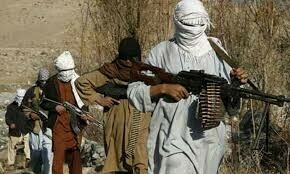ISLAMABAD: After a brief respite in March, the nation saw a resurgence of militant strikes in April, with Khyber Pakhtunkhwa, especially its southern regions, suffering the most.
The Pakistan Institute for Conflict and Security Studies (PICSS), a think tank with its headquarters in Islamabad, published these conclusions in its monthly security assessment report.
Statistics show that in April, there were at least 77 confirmed acts of terrorism throughout the nation, which led to 70 fatalities—of which 35 were civilians and 31 were security personnel. There were four militant deaths.
There were 67 people hurt, 32 of whom were civilians and 35 of them were security personnel.
35 civilians and 31 security personnel were among the casualties; KP was the site of 77 attacks.
By contrast, there were 56 militant attacks in March, which led to 77 fatalities and 67 wounded. This suggests that there was a 38% rise in militant attacks despite a 9% decrease in fatalities and no change in the number of injured.
The nation’s security forces’ efforts to avert other possible assaults throughout the month were also highlighted in the security report. With the arrest of 12 people, including those connected to the Basham suicide attack, and the death of at least 55 suspected militants, the number of militant killings has increased by 55% since March.
The report went on to state that KP, including its tribal regions, was the site of 73% of all militant assaults that were reported in April. In the preceding month, there were fifty-six attacks recorded in the province. 43 individuals were killed in the attacks: 17 civilians and 26 personnel of the security services.
Thirteen civilians and nineteen members of the security forces made up the total of 32 injured.
Within KP, tribal districts (formerly known as Fata) had fewer attacks and fatalities than mainland districts. 31 attacks were reported in Mainland KP, with 25 people dying and 10 injured. The most hit areas were the southern districts of D.I. Khan, Lakki Marwat, Bannu, and Tank; each district had seven militant attacks, Lakki Marwat saw six, and Tank saw two. Combined, these districts were responsible for 71% of KP’s mainland attacks.
There were also four attacks on Peshawar and one each on Swat, Swabi, Charsadda, Shangla, and Battagram.
PICSS documented a minimum of 25 attacks in the tribal regions of KP (formerly known as Fata), leading to 18 fatalities and 22 injuries. The most affected districts were South Waziristan, Bajaur, and North Waziristan, with four, five, and nine assaults recorded, respectively.
The report states that 16 attacks were carried out in Balochistan, leaving 31 people injured and 21 people dead—including four security personnel and 17 civilians—in the wake of the incident. The province’s Baloch belt, especially in the south and southwest, was the scene of the majority of these attacks. In particular, Khuzdar reported three attacks, Kech, Kohlu, and Quetta reported two, and Chaman, Dera Bugti, Duki, Kalat, Kharan, Mastung, and Nushki reported one each.
There was a marked increase in insurgent activity in Punjab as well; four attacks were reported in April as opposed to just one in March, which claimed three lives. Three people were allegedly killed in one attack that occurred in Sindh.
The nation had 323 extremist strikes in the first four months of this year, which left 324 people dead and 387 injured.








